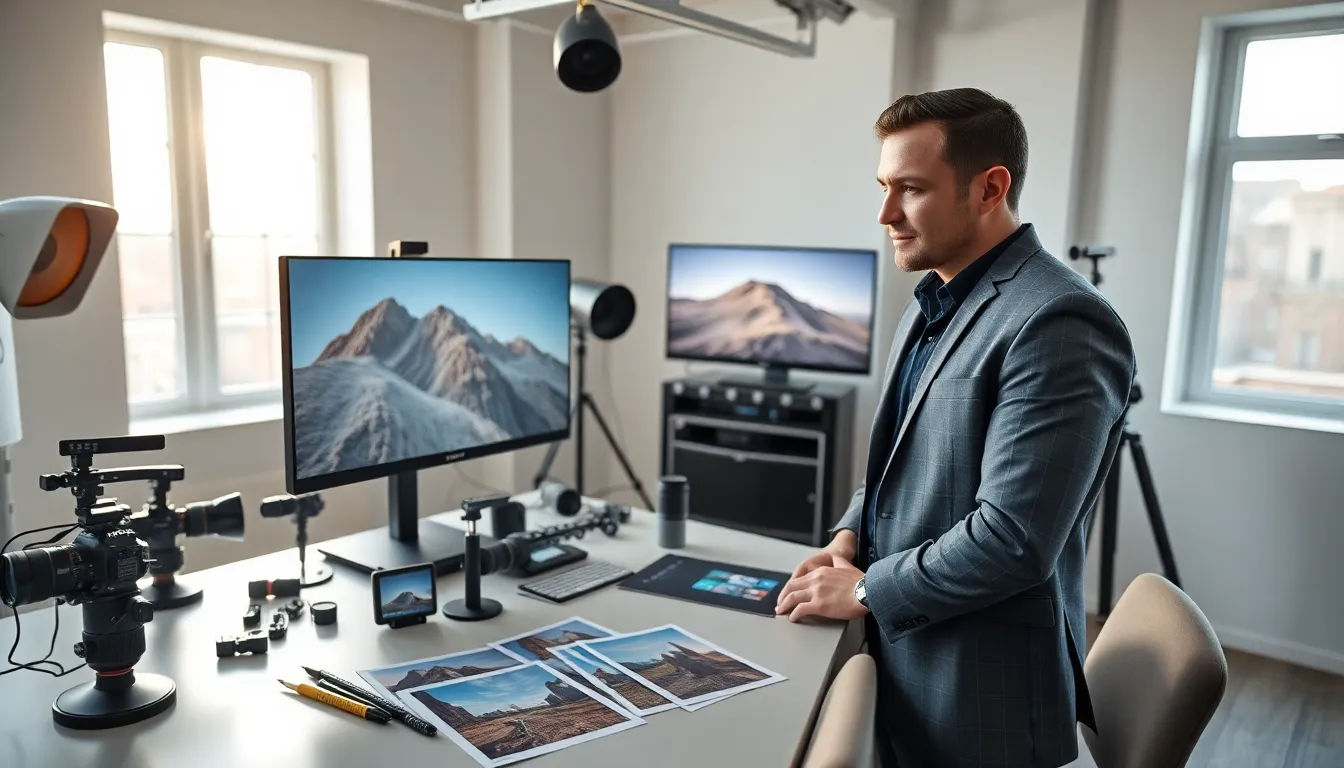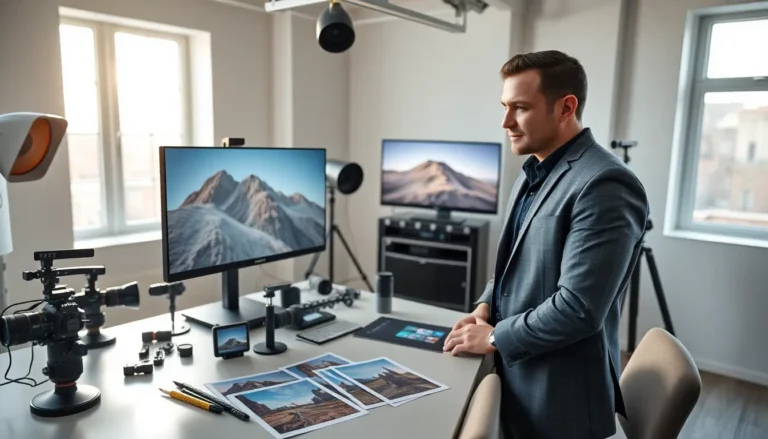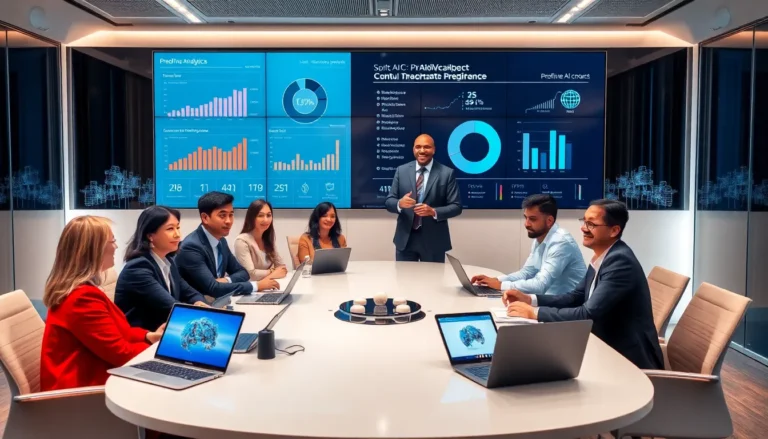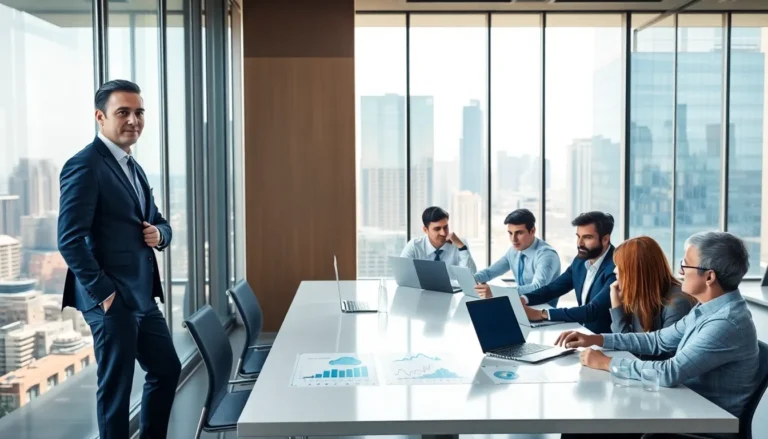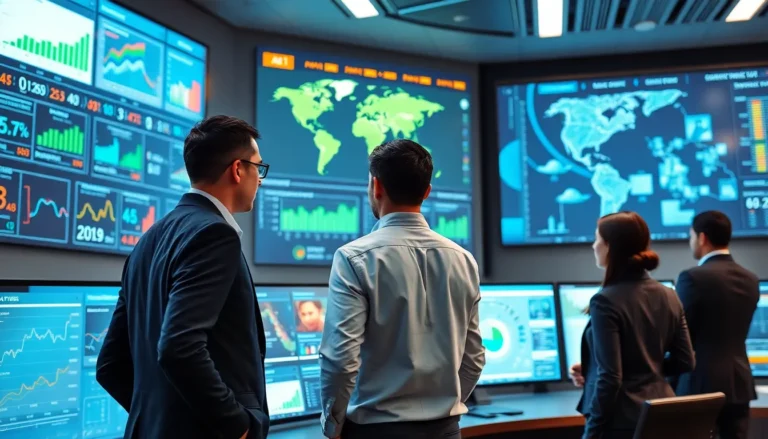Table of Contents
ToggleImagine a world where a single line of code can conjure breathtaking images, where photographers are no longer the only artists behind the camera. With artificial intelligence (AI) taking center stage in photography, we’re diving into an exciting realm where creativity meets technology, and yes, the memes are plentiful. Whether you’re a seasoned professional or a casual snapper, the future of AI in photography is too captivating to ignore. Let’s explore how this technological wizardry is reshaping the art of image creation, without a single paintbrush involved.
Understanding Artificial Intelligence in Photography
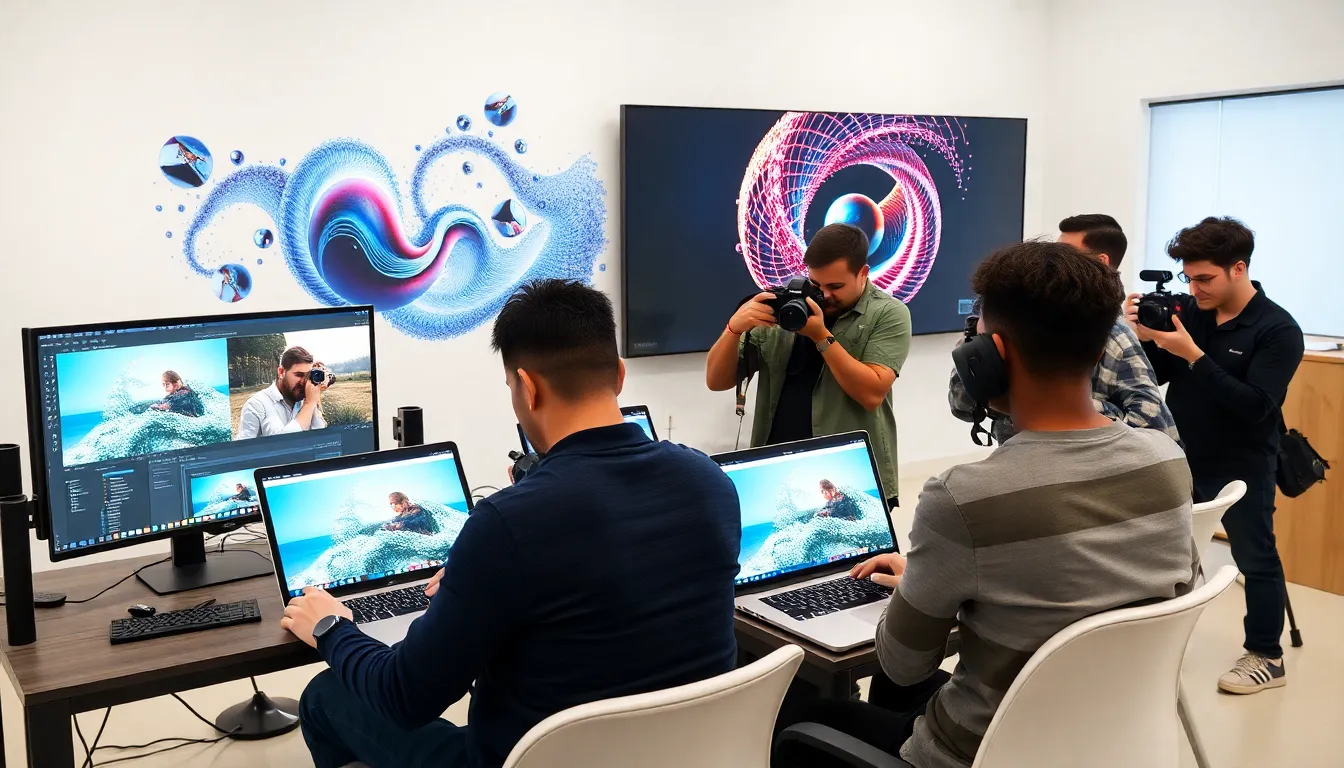
How AI Technology Enhances Image Creation
Artificial Intelligence revolutionizes photography in remarkable ways. One of the primary applications of AI is in enhancing image quality. Using sophisticated algorithms, AI can analyze photographs pixel by pixel to improve sharpness, reduce noise, and optimize colors. This automated editing process saves countless hours that photographers once spent behind their editing screens.
Also, AI systems can create entirely new visuals. Generative Adversarial Networks (GANs) allow AI to generate images from scratch based on text prompts or existing photographs. Imagine a scenario where an artist describes a scene in words, and within seconds, the AI produces a stunning visual that captures the essence of that description. By leveraging vast datasets, AI has the potential to generate artwork that rivals human creativity.
AI Tools for Photographers
Today, numerous AI tools are available to amateur and professional photographers. Adobe Photoshop, beloved by many, integrates AI features like Adobe Sensei to automate boring tasks such as object removal and background adjustment. You also have software like Luminar AI that focuses entirely on intelligent editing, allowing users to enhance their photos with customizable one-click solutions.
For those looking to push the boundaries, DeepArt and Runway ML allow users to apply artistic styles to images using neural networks, transforming ordinary snaps into extraordinary pieces of art. With such tools, creativity is only limited by one’s imagination, and perhaps the occasional printer jam.
Ethical Considerations in AI Photography
The Impact of AI on Artistic Expression
As AI continues to seep into photography, questions around artistic expression arise. Critics argue that reliance on AI diminishes the value of human creativity. If a stunning photo can be generated in seconds with a few clicks, does that undermine traditional photography? But others assert that AI can augment human creativity rather than replace it.
Artists can collaborate with AI, using it as a tool to expand their creative horizons. The blend of human intuition and AI efficiency can yield results that would be almost impossible to achieve independently. This partnership may even give birth to entirely new art forms that are uniquely digital, challenging the notion of what art can be.
Challenges Artists Face with AI-generated Images
But, artists navigating this new landscape face numerous challenges. Copyright issues are at the forefront. If an AI-generated image derives from thousands of existing photos, whose ownership is it? The conversation around copyright in AI art is complex and evolving, as artists seek to protect their intellectual property.
Also, the risk of plagiarism looms large. With the ease of generating images comes the potential for misuse. An artist’s unique style can be replicated by AI, leading to concerns about authenticity and originality. Striking a balance between utilizing AI and maintaining personal artistic integrity is becoming crucial.
Future Trends in AI Photography
Emerging Technologies in AI Photography
The future of AI in photography is nothing short of exhilarating. Advancements in machine learning and computer vision promise even more innovative tools. For instance, image recognition technology is evolving rapidly, helping photographers identify subjects and settings more accurately than ever before.
We’ve also seen the rise of AI-powered drones capable of capturing aerial shots autonomously. This technology not only simplifies the art of drone photography but also provides opportunities for capturing stunning visuals that were once reserved for experienced professionals.
Imagine an AI camera that learns a photographer’s style, optimizing settings to reflect their unique vision. These technologies are knocking on our doors, ready to redefine photography as we know it.
The Role of AI in Social Media Imagery
Social media platforms like Instagram and Facebook rely heavily on visuals. As such, AI tools are becoming crucial in curating and enhancing photos before they are shared. From automatic filters to predictive analytics that help users determine the best times to post, AI is changing how we interact with images.
Also, AI can analyze audience engagement data to suggest content styles and themes that resonate with an audience. This level of personalization elevates the user experience while helping photographers and brands maximize their reach. As social media trends continue to evolve, so too will the role of AI in shaping the images that flood our feeds.

